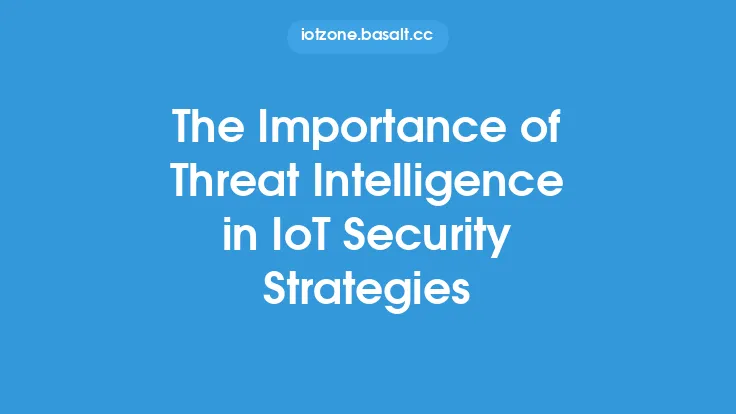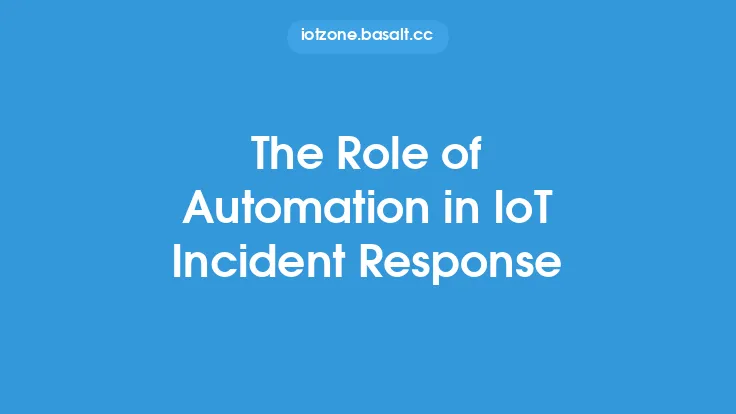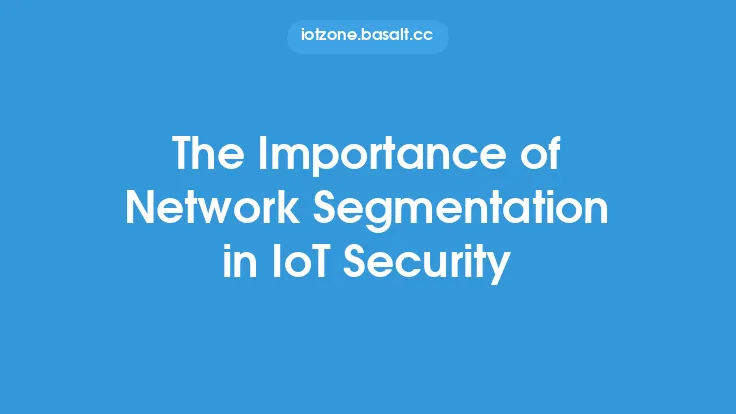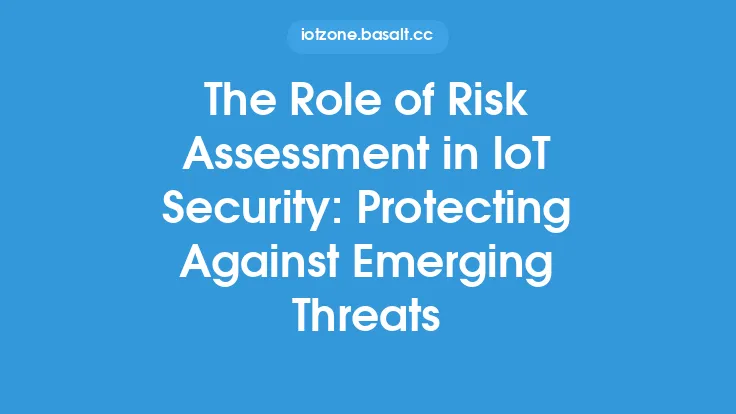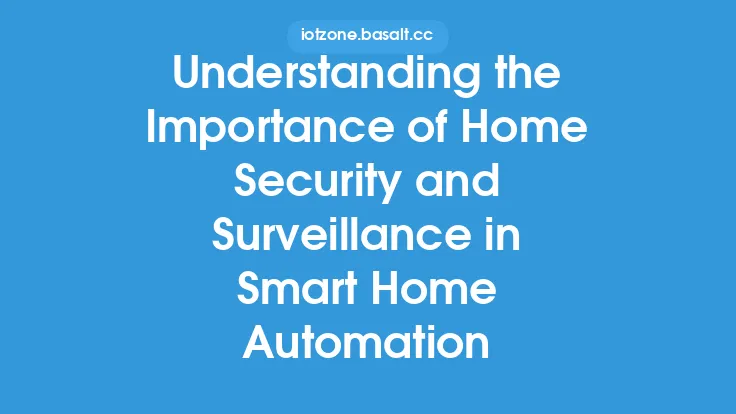The increasing number of Internet of Things (IoT) devices has led to a significant rise in the potential attack surface, making IoT security a pressing concern. As IoT devices become more pervasive in various aspects of life, including homes, industries, and cities, the risk of security breaches and incidents also grows. In this context, incident response planning plays a vital role in ensuring the security and integrity of IoT systems. Incident response planning is the process of developing and implementing procedures to respond to and manage security incidents, minimizing their impact and preventing future occurrences.
Introduction to Incident Response Planning
Incident response planning involves a proactive approach to identifying potential security threats, assessing risks, and developing strategies to mitigate them. It requires a thorough understanding of the IoT system, including its architecture, components, and potential vulnerabilities. A well-planned incident response strategy helps organizations to respond quickly and effectively to security incidents, reducing downtime, data loss, and reputational damage. Incident response planning is an ongoing process that involves continuous monitoring, evaluation, and improvement of the response strategy to ensure it remains effective and relevant.
Key Components of Incident Response Planning
A comprehensive incident response plan for IoT security should include several key components. These include:
- Risk Assessment: Identifying potential security risks and vulnerabilities in the IoT system, including device vulnerabilities, network vulnerabilities, and data vulnerabilities.
- Incident Detection: Implementing monitoring and detection systems to identify security incidents in real-time, such as intrusion detection systems, anomaly detection systems, and security information and event management (SIEM) systems.
- Incident Response: Developing procedures for responding to security incidents, including containment, eradication, recovery, and post-incident activities.
- Communication: Establishing communication channels and protocols for incident response, including notification procedures, incident reporting, and stakeholder communication.
- Training and Awareness: Providing training and awareness programs for personnel involved in incident response, including IoT security awareness, incident response procedures, and communication protocols.
- Continuous Monitoring and Improvement: Continuously monitoring the incident response plan and improving it based on lessons learned from incidents, new threats, and emerging trends.
Benefits of Incident Response Planning
Incident response planning offers several benefits for IoT security, including:
- Reduced Downtime: Quick response to security incidents reduces downtime and minimizes the impact on business operations.
- Minimized Data Loss: Effective incident response helps to minimize data loss and prevent unauthorized access to sensitive information.
- Improved Reputation: A well-planned incident response strategy helps to maintain customer trust and reputation by demonstrating a proactive approach to security.
- Compliance: Incident response planning helps organizations to comply with regulatory requirements and industry standards for security incident response.
- Cost Savings: Incident response planning can help reduce the cost of security incidents by minimizing the impact and preventing future occurrences.
Challenges in Incident Response Planning
Despite the importance of incident response planning, several challenges exist, including:
- Complexity: IoT systems are complex and diverse, making it challenging to develop a comprehensive incident response plan.
- Limited Resources: Small and medium-sized organizations may have limited resources, including budget, personnel, and expertise, to develop and implement an incident response plan.
- Evolving Threats: IoT security threats are evolving rapidly, making it challenging to stay ahead of emerging threats and vulnerabilities.
- Lack of Standardization: The lack of standardization in IoT devices and systems makes it challenging to develop a unified incident response plan.
- Limited Visibility: The lack of visibility into IoT systems and devices can make it challenging to detect and respond to security incidents.
Best Practices for Incident Response Planning
To overcome the challenges and develop an effective incident response plan, several best practices can be followed, including:
- Conduct Regular Risk Assessments: Regular risk assessments help to identify potential security risks and vulnerabilities in the IoT system.
- Develop a Comprehensive Incident Response Plan: A comprehensive incident response plan should include all the key components, including risk assessment, incident detection, incident response, communication, training, and continuous monitoring.
- Implement Continuous Monitoring: Continuous monitoring helps to detect security incidents in real-time and respond quickly to minimize the impact.
- Provide Training and Awareness: Training and awareness programs help to ensure that personnel involved in incident response are aware of the procedures and protocols.
- Review and Update the Plan Regularly: The incident response plan should be reviewed and updated regularly to ensure it remains effective and relevant.
Conclusion
Incident response planning is a critical component of IoT security, helping organizations to respond quickly and effectively to security incidents and minimize their impact. A well-planned incident response strategy requires a thorough understanding of the IoT system, including its architecture, components, and potential vulnerabilities. By following best practices and overcoming challenges, organizations can develop an effective incident response plan that helps to maintain the security and integrity of their IoT systems. As the IoT landscape continues to evolve, incident response planning will play an increasingly important role in ensuring the security and resilience of IoT systems.
